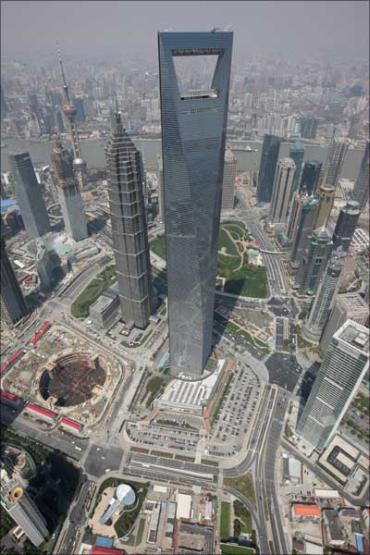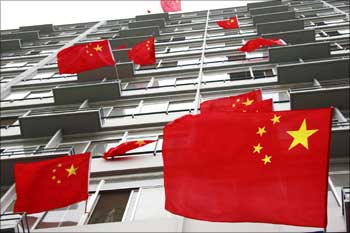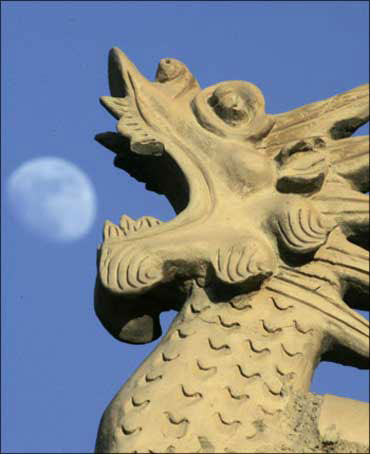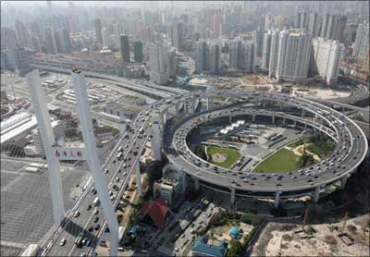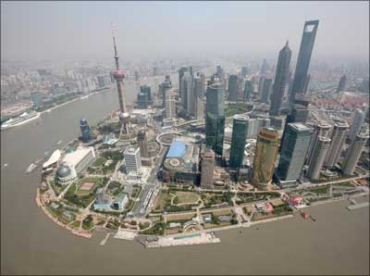 | « Back to article | Print this article |
Sino-Indian trade marked by caution and suspicion
Last week, India and China concluded a "highly productive and successful" strategic economic dialogue at Beijing, as the agreed minutes of the meeting depicted.
Proposed during Premier Wen Jiabao's visit to New Delhi in December 2010, the dialogue process came in the backdrop of the global meltdown, euro zone crisis and scaling down of economic growth rates by India and China.
The dialogue came in the background as well of China becoming the largest trading partner of India (with more than $61 billion in 2010 and expected to reach $100 billion by 2015).
Several India and Chinese companies have also expanded their business operations.
Click NEXT to read more...
Sino-Indian trade marked by caution and suspicion
More than 200 Indian companies have invested in China, while Huawei and ZTS have major stakes in the Indian telecom sector.
Infosys had acquired land in Shanghai for its commercial operations and Tata's Jaguar and Land Rover witnessed 70 per cent jump in sales in China in 2010 as compared to the previous year.
Mahindra as well carved out niche areas in the China tractor market.
Yet, despite the positive statements on expanding the ambit of cooperation in the economic, trade, investment, infrastructure projects, water, energy and environmental issues and building the much needed stakes in each other, India appears to be treading cautiously and is reflected in the absence of any "big ticket" items in the list of agreements.
Click NEXT to read more...
Sino-Indian trade marked by caution and suspicion
Firstly, India is looking for positive assurances from China on a number of issues - market access, investment flows, anti-dumping, etc. given the wide trade imbalance (of more than $22.2 billion in 2010 in favour of China) and restrictions imposed on the Indian companies in the Chinese market.
This issue was raised during President Pratibha Patil's visit to Beijing last year and subsequently in several high-level meetings.
Secondly, while India had assiduously negotiated and had been putting in place Comprehensive Economic Partnership Agreements with South Korea and Japan, implementing Free Trade Area with Sri Lanka, Southeast Asian countries and negotiating for such a zone with Taiwan and European Union, New Delhi is unenthusiastic on the long-standing FTA proposal from Beijing.
Click NEXT to read more...
Sino-Indian trade marked by caution and suspicion
The Chinese Ambassador to India Zhang Yan, on the eve of Premier Wen's visit to Delhi, reiterated that India should sign a FTA.
However, both have been discussing a possible Regional Trade Agreement, which as well had not yet materialized given the reluctance of the "Mumbai club" in India.
Indian political and commercial lobbies' reluctance in jumping into the FTA fray with China is based on the assessment that such an arrangement is fraught with long-term consequences not only impacting on domestic economic sectors but also in the larger strategic landscape of Asia and beyond.
As a large country, with more than a billion people (that is exhibiting younger demographic profile), with mature service and software sectors and posting near double-digit economic growth rate figures, India needs to study carefully such proposals.
Click NEXT to read more...
Sino-Indian trade marked by caution and suspicion
In this context, Prime Minister Dr Manmohan Singh proposed a pan-Asian FTA at the second East Asian Summit at Cebu in January 2007, but opposed by China.
It appeared that India is concerned about the uninterrupted Chinese inroads into Central, South, West and Southeast Asia through infrastructure projects and the effect this could have on marginalization of India. A pan-Asian FTA could avoid such pitfalls as there could be better level-playing field and positive development of complementarities. In this scenario the "rules of origin" principle could also restrict dumping of cheaper goods from China into the Indian market.
Thirdly, while India announced that it needs more than $1 trillion in building infrastructure projects and expand the manufacture sector share in the GDP to nearly 30 per cent, China's role, modalities and contribution in this regard is not clear.
Click NEXT to read more...
Sino-Indian trade marked by caution and suspicion
For instance, although Chinese companies such as Sepco Electric Power, Harbin, Shanghai Electric Corp, etc are preparing to supply equipment for nearly 80,000 MW projects in India worth an estimated $50 billion, some established Indian companies have expressed concerns on the Chinese banks (such as China Development Bank, ICBC, etc) offering cheaper credit (about $10 billion), mainly in renminbi [Chinese currency, yuan] loans.
Such a move, although sought by some Indian companies have two potential long-term consequences, viz., one, major Indian companies in this sector like Bhel, Larsen and Toubro, etc. are likely to be adversely affected and secondly Indian economy as a whole possibly coming under the renminbi hegemony, specifically as the US dollar and euro are facing turbulent times.
Click NEXT to read more...
Sino-Indian trade marked by caution and suspicion
The Chinese proposals for establishing "Hua Yuan" in East and Southeast Asia and the currency swap arrangements are being watched carefully in this regard.
Another infrastructure project, reportedly explored at the dialogue, is the development of high speed railways.
China indeed made rapid strides in high-speed railways, although this came at high cost - reflected in multi-billion dollar scandal involving minister Liu Zhijun, a protege of Jiang Zemin and the architect of high speed railways, who was dismissed in February 2011 on charges of corruption.
The Shandong (2008) and Wenzhou (2011) train crashes have also questioned such projects.
During Premier Wen's visit to Delhi in 2010 a proposal was made to sell Chinese high speed railways to India, but in vain.
Professor Srikanth Kondapalli teaches at the China programme at Jawaharlal Nehru University, New Delhi
